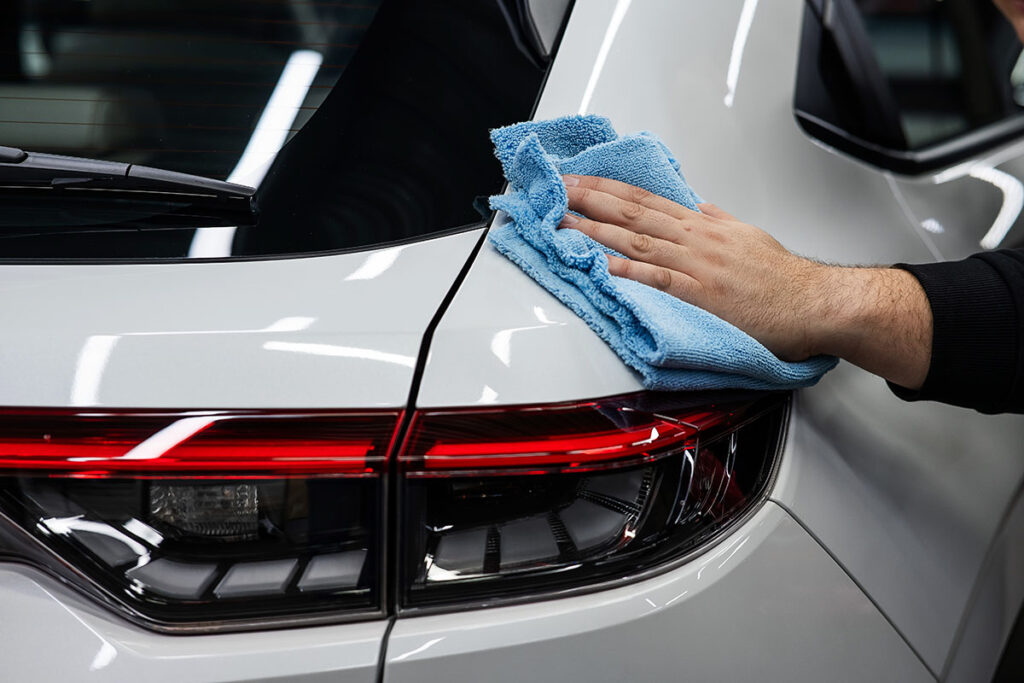Removing bumper stickers may seem simple, but it requires careful attention to avoid damaging your vehicle’s paint. Whether you’re dealing with old decals or removing San Antonio bumper stickers, proper removal is important not only for appearance but also to protect your car’s surface.
Consider these key points:
- Importance of Careful Removal: Rushing the process can lead to scratches, paint peeling, or adhesive residue that’s difficult to eliminate.
- Methods and Tools: Effective techniques for safe bumper sticker removal include:
- Heat application using a hair dryer or heat gun
- Chemical solvents like WD-40 or Goo Gone
- Natural alternatives such as white vinegar
Understanding how to remove bumper stickers without damaging paint will help you keep your vehicle looking its best. As your go-to San Antonio sticker designer, we’re here to provide detailed methods and tips for successful removal.
Bumper stickers come in various types, each made from different materials and designed for specific purposes. Knowing these aspects can greatly influence the removal process.
Types of Car Stickers
- Vinyl Stickers: Commonly used due to their durability and resistance to fading. They adhere well to surfaces but may require special care during removal to avoid paint damage.
- Reflective Stickers: Often used for safety or promotional purposes, these stickers are coated with a reflective material. Removal can be more complicated since they may leave residue behind.
- Magnetic Stickers: These do not use adhesive and can be easily removed without damaging the paint. However, they are only suitable for metal surfaces.
Common Placements
Bumper stickers typically find their home on:
- Rear Bumpers: The most common location, often used for personal expression or advertising.
- Windows: Sometimes placed on windows, especially if they are designed to be easily removable.
Understanding the type and placement of bumper stickers helps you choose the best removal method while minimizing potential damage to your vehicle’s paint. Proper identification leads to a more effective sticker removal experience.
Preparing for Sticker Removal
Before starting the process of removing a bumper sticker, it’s important to prepare the surface properly. Cleaning the area around the sticker ensures that dirt and debris do not get in the way of your removal efforts. A clean surface also reduces the chances of scratching the paint during the removal process.
Recommended cleaning solutions:
- Warm soapy water: Mix a few drops of dish soap with warm water.
- Automotive glass cleaner: Ideal for lifting grime without harsh chemicals.
Tools needed for preparation:
- Microfiber cloth: Soft and non-abrasive, perfect for gentle cleaning.
- Plastic scraper or credit card: Helps to lift the edges of the sticker later without damaging paint.
Wiping down the area around the sticker prepares your vehicle’s surface, allowing for a smoother and safer removal process. The right prep sets the stage for effective sticker removal techniques you will explore next.
Methods for Removing Bumper Stickers Without Damaging Paint
Removing bumper stickers can be a delicate process. Employing the right methods is crucial to avoid damaging your vehicle’s paint. Two primary techniques include using heat and chemical solvents.
Using Heat to Soften Adhesive
Heat is effective for loosening the adhesive on bumper stickers. Follow these steps for safe application:
- Choose Your Tool: Use a hair dryer or heat gun. A hair dryer is safer for beginners due to its lower temperature setting.
- Set Up: Hold the tool about 6-8 inches from the sticker surface.
- Apply Heat: Turn on the device and move it in circular motions over the sticker for about 30 seconds. Avoid concentrating heat in one spot to prevent paint damage.
- Check Adhesive Softness: Test if the adhesive has softened by gently lifting an edge of the sticker with a plastic scraper or your fingernail.
- Peel Carefully: Slowly peel back the sticker, maintaining even pressure to prevent tearing.
Precautions During Heating
- Monitor the paint condition closely while applying heat.
- Do not use excessive force which can lead to damage.
- Avoid heating vinyl stickers for too long as they may warp.
Effective Chemical Solvents for Sticker Removal
Chemical solvents provide another option for removing stubborn bumper stickers. Here are some recommended products and their applications:
WD-40
- Spray a small amount directly onto the sticker.
- Allow it to sit for a few minutes to penetrate the adhesive.
- Gently scrape off the sticker using a plastic scraper.
Goo Gone
- Apply a liberal amount on and around the sticker area.
- Let it sit briefly before scraping away with a plastic scraper.
- Clean any residue with warm soapy water afterward.
White Vinegar
White vinegar is an excellent natural alternative that is less harsh than commercial solutions:
- Soak a cloth in white vinegar and place it over the sticker for several minutes.
- The acidity helps break down adhesive bonds without harming your car’s finish.
- After soaking, use a plastic scraper or fingernail to lift and remove the sticker.
Dealing with Sticky Residue After Removal
Removing bumper stickers often leaves behind sticky residue. Addressing this residue is essential for maintaining the appearance of your vehicle. Here are effective methods for sticky residue removal:
1. Rubbing Alcohol
- Apply a small amount to a microfiber cloth.
- Gently rub the residue until it dissolves.
- Ensure the area is cleaned afterward with warm soapy water.
2. Baking Soda Paste
- Mix baking soda with water to form a paste.
- Apply the paste to the sticky area, allowing it to sit for several minutes.
- Wipe away with a clean cloth, using circular motions for best results.
3. Detailing Spray
- Use a high-quality detailing spray designed for vehicles.
- Spray directly onto the residue, wait briefly, then wipe clean with a microfiber cloth.
4. Clay Bar
- For stubborn spots, use a clay bar kit.
- Lubricate the area and gently rub the clay over the residue until removed.
Common Mistakes to Avoid During Sticker Removal
Removing bumper stickers requires patience and attention to detail. Avoid these common mistakes removing stickers to protect your vehicle’s paintwork:
- Rushing the Process: Hurrying can lead to tearing the sticker or damaging the paint. Take your time to ensure careful removal.
- Using Inappropriate Tools: Sharp objects or abrasive tools can scratch the surface. Opt for plastic scrapers or credit cards for lifting stickers gently.
- Not Testing Methods First: Always try your chosen removal method in an inconspicuous area. This step helps prevent unexpected damage to your vehicle’s finish.
Tips for Safe Sticker Removal
- Work patiently: Take your time during the removal process. Rushing can lead to mistakes and potential damage to your vehicle’s paint.
- Monitor paint condition: Regularly check the paint surface as you work. This helps you identify any issues early and adjust your technique accordingly.
- Consider professional help: If you’re unsure about safe sticker removal techniques or if the sticker is particularly stubborn, seeking assistance from a professional can save time and prevent damage.
Utilizing these safe sticker removal techniques ensures a successful outcome while preserving your vehicle’s appearance.
Maintaining Vehicle Aesthetics Post-Removal
Removing bumper stickers properly can help maintain your vehicle’s appearance, and attention to detail during the removal process ensures that you keep your car looking its best. Follow these best practices for sticker removal to protect your paint and maintain aesthetics:
- Clean the Area: After removing the sticker, clean the surface thoroughly to remove any remaining adhesive residue.
- Wax Your Car: Apply quality car wax to protect the paint. Waxing helps restore shine while acting as a barrier against environmental elements.
- Inspect for Damage: Check for any areas of discoloration or damage resulting from the sticker or removal process. Addressing these issues early can prevent further deterioration.
The methods outlined—using heat, chemical solvents, and gentle scraping—allow you to effectively remove bumper stickers without damaging paint. Patience and care are key throughout this process. If unsure about any step.
Maintaining your vehicle’s appearance after sticker removal not only enhances its look but also preserves its value. Taking these steps ensures your vehicle remains in top condition long after the bumper stickers are gone.
And, of course, if you’re in need of fast, quality sticker printing in San Antonio TX, contact us today to discuss your needs!
Frequently Asked Questions About Bumper Sticker Removal
What are the best methods to remove bumper stickers without damaging paint?
The best methods for removing bumper stickers without damaging paint include using a hair dryer or heat gun to soften the adhesive, applying chemical solvents like WD-40 or Goo Gone, and using natural alternatives such as white vinegar.
How can I prepare my car’s surface before removing a bumper sticker?
Before removing a bumper sticker, it’s important to clean the area around it. Use warm soapy water or automotive glass cleaner along with a microfiber cloth to ensure the surface is free from dirt and debris.
What types of bumper stickers exist and how do they affect removal?
Bumper stickers come in various types, including vinyl and reflective materials. The type of material can impact the removal process; for example, vinyl stickers may require more heat to loosen their adhesive compared to other types.
What common mistakes should I avoid when removing bumper stickers?
Common mistakes to avoid include rushing the removal process, using inappropriate tools or harsh chemicals that can damage paint, and failing to test removal methods on inconspicuous areas first.
How do I deal with sticky residue left after removing a bumper sticker?
To remove sticky residue left after removing a bumper sticker, you can use rubbing alcohol or baking soda. Detailing spray and clay bars can also be effective for finishing touches on the surface.
When should I consider seeking professional help for sticker removal?
If you’re unsure about the techniques or feel uncomfortable attempting the removal yourself, it’s best to seek professional help. They have the experience and tools necessary to safely remove stickers without risking damage to your vehicle’s paint.

